Images of Common Garden Pests, Bugs and Natural Remedy Solutions
It is only possible to mention a few of the common garden bugs and pests, and I begin with one of the most frequent and troublesome of plant enemies.
When bad weather conditions prevail, your garden will often be invaded by all types of garden bugs and insects. The keen, dry east wind that so often endangers fruit crops is usually followed by visitations of fly and maggot, which is no fault of our own. However, if we neglect watering our plants then we are to blame.
Good cultivation not only results in strong and healthy plants, but it is often the means of preventing the plants from falling under the attacks of garden pests such as aphids, mealy bug, spider mites and other enemies against which the gardener has to fight an unceasing battle.
Insects are among the frailest of living creatures and they die at a touch. As they breathe through the pores of the skin, water alone—the promoter of life and cleanliness—is death to them; and can easily be killed when oil is added to the water or even an active poison, such as tobacco, or a substance that clings to them and stops the process of breathing, washing-up soap, and the numerous other preparations that are specially made to get rid of garden pests.
The Life-Cycle of Common Garden Pests
The butterfly may float beyond the reach of harm, but in the caterpillar or the chrysalis state it can be dealt with effectively. Again, we may be powerless to destroy the Chafer grubs as they feed or hibernate beneath the soil, but in their perfect state as Cockchafers or Rose Chafers many may be beaten down during quiet evenings, and others can be shaken from roses at dawn or sunset.
A knowledge of the life-history of garden pests and insects will result in knowing what is to be done and the right time for doing it, so that often by simple treatment they may be destroyed. Neem is a fantastic organic pest control that interrupts the sexual reproductive cyle of insects that results in getting rid of them completely.
Solutions with Organic Pesticides to Get Rid of Common Garden Pests
Make a simple spray container for your organic pesticide by reusing one of your household detergent sprayers. Every general washing should be followed by another at an interval of from a week to a fortnight, because, although the first operation may kill every insect, there will be many living eggs left, and these renew the race, and very soon bring the plants into as bad a state as ever, unless they get the happy dispatch that their parents got.
Visit garden pest control methods for a complete list of sprays and recipes using natural and organic ingredients.Feeding your Common Garden Pests
It may sound odd, but in some cases it will be more economical to feed certain of your garden pests than to destroy them; and, as a rule, feeding them does not add to their numbers, in the same or any future season, for insect life is so strangely dependent on certain conditions of temperature, etc, that if the season is not favorable to a particular kind it will be scarce, no matter how plentiful it may have been in a previous year.
In the case of the Turnip Fly, feeding is frequently the cheapest and surest way of saving the crop. It is customary with Dahlia growers, and, indeed, with the growers of florists' flowers generally, to sow lettuces where the flowers are to be planted, in other words - inter-cropping, for so long as lettuces are on the spot slugs and snails will prefer them to other food.
As the lettuces themselves serve the purpose of traps, the snails and slugs congregated about them may, towards evening, be caught and destroyed. Basically, this is known as companion planting, which I am a big fan of, because I know it works.
Common Garden Pests and Aphids
The Green
Fly is the
enemy of
the softer kinds of
vegetation, and the Blue and the Black Fly are common plagues of
the orchard. Both my cause distortion and
discoloration, and
possibly spread virus infections as they feed.
The tender body of the aphid is instantly
affected by conditions unfavorable to its life, and it is therefore
easily killed; but its marvelous power of reproduction makes its
extinction impossible, for in every instance a few escape, and very
soon
re-establish their race.
Natural Remedy for Aphids:
Two methods of getting rid of aphids are popular. One of course, which is not organic in principle, but effective nevertheless is using tobacco steeped in water.The other remedy is to use one of the many recipes given on our natural pesticides page and for house plants it is recommended that the plants are totally submerged in the preparations.
Take a plant in the right hand and spread the fingers of the left hand over the surface of the soil to prevent the plant and soil from tipping out; then turn the plant over and plunge the foliage in the liquid, moving it up and down briskly two or three times. If this is not practicable spray the plants, taking care to wet the leaves on both sides and give the plant a thorough drenching. On the following day spray with pure soft water.
Rose trees may generally be cleansed of fly by means of a strong garden hose using pure water only, the essential point being to direct the water on the trees with some amount of force for several evenings in succession whenever the fly threatens to obtain the upper-hand. However, also spraying your roses with white oil afterwards is also very effective.
Soft soap dissolved in water makes a cheap and effectual wash for eliminating all kinds of aphids, and to these ingredients quassia will also help. One pound of soft soap will be enough for ten gallons of water, into which stir the extract obtained by boiling one pound of quassia chips in water. Pot plants can be dipped in it as already advised, or the solution may be applied by means of the spray gun. On the following day the plants should be cleansed with pure soft water.
One can also introduce natural predators to aphids such as ladybirds also known as ladybugs. Stores now sell these by the 1000s so that they can be released into your garden. Buy ladybugs or ladybirds here.
Common Garden Pests and the Bean Aphid
The Bean Aphid, also known as the Bean Plant Louse, or Black Dolphin (Aphid rumicis). The pupa is black with greyish white mottlings, while the female is deep greenish black in colour. This insect commonly attacks the young shoots and tops of Broad Beans.
Natural Remedy for Bean Aphids:
Cut
off the infected tops and burn them. For repeated attacks, spray the
Beans with a solution of soft soap and quassia.
Common Garden Pests and the Pea-Siphon Aphid
The Pea Siphon-Aphid (Siphonophora pisi, Kalt).—Among the aphides peculiar to vegetables this is one of the most common.
The Pea Siphon-Aphid can be either greenish-winged or green-tinted wingless female, and the young are produced, not from eggs, but alive and developed. This insect is occasionally very destructive to Pea crops.
Common Garden Pests and the Woolly Aphid
American Blight, or Woolly Aphid, are garden pests generally appearing first on trees grafted on dwarfing stocks. Aphids rapidly increase and healthy trees become infested, and unless checked an orchard is quickly ruined.
Natural Remedy for Woolly Aphids:
Apple Blight Aphids (Schizoneura lanigera) are garden pests that are deep purplish brown in colour, and the well-known bluish white cottony material naturally exudes from them.
Common Garden Pests and the Cabbage Root Fly
Natural Remedy for Cabbage Root Fly:
If you have a cabbage root fly problem make small discs of cardboard of about 10 cm in diameter and cut a straight line from the outer edge to the center of the circle and fit it as a collar around each plant.Common Garden Pests and the Carrot Fly
Picture Courtesy of Rasbak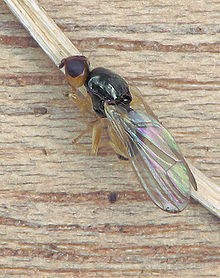 The Carrot Fly
(Psila rosae), with its larva, pupa, and
perfect
insect, is illustrated left. The ochreous shining
larvae live upon the tap-roots of the carrot, and by eating into them
cause them to rot.
The Carrot Fly
(Psila rosae), with its larva, pupa, and
perfect
insect, is illustrated left. The ochreous shining
larvae live upon the tap-roots of the carrot, and by eating into them
cause them to rot.
In colour the body of the fly is an intensely dark greenish black, with a rusty ochreous head. The presence of the larvae in the root is made known by the change in the color of the leaves from green to yellow, and the attacked plants should be promptly forked out and burned.
When growing carrots It is good to dig the ground in autumn, so that the earth may be exposed to the frosts of winter and the pupae get the attention of the birds.Natural Remedy for Carrot Fly:
Carrot flies don't like soot or wood ash and probably the best organic way to get rid of pests is to soak the bed once a week with a thin mixture of wood ashes and water using a watering can. A copious watering when the task is ended will firm the earth round the remaining roots, and prevent the fly from easily getting down to deposit eggs.Carrots, celery and parsnips are often attacked by the larva of a Carrot Moth (Depressaria cicutella), which spins webs for security while feeding, and sometimes works havoc among the foliage. A simple remedy is to shake the caterpillars from the leaves of the plants, when they can be destroyed by the use of lime.
Common Garden Pests and the Celery Fly
Celery Fly—The apparent blisters in Celery leaves are spots deficient of leaf-green, which the larva of the Celery Fly has eaten. Dusting newly-planted celery with soot may do something to prevent the fly from laying its eggs. When the grub has made a home, it should be crushed by pinching the leaf between the finger and thumb, or the damaged portions of the leaves should be cut out and burned.
In doing this it must always be remembered that the leaves are as much needed by the plant as the roots, and every leaf removed tends to diminish the strength of the plant. This fly is also destructive to the leaves of parsnips, and is named onopordinis from its habit of frequenting the Cotton Thistle (Onopordon Acanthium). The larva is white to very pale green, the fly is shining tawny. An Ichneumon Fly detects the larva of the Celery Fly in the Celery and Parsnip leaves, and lays its eggs in the body of the larva. These parasites, named Alysia apii, assist in reducing the numbers of the Celery Fly.
Natural Remedy for Celery Fly:
All Celery refuse should be destroyed by fire. Infested ground may, if suitable, be trenched, bringing the subsoil to the surface and burying the top soil containing the pupae. Frequent rough digging and the exposure of fresh surfaces to be searched by birds will also do something to abate the number of this pest.Common Garden Pests and the Onion Fly
Onion Fly—Onions are frequently attacked by the larvae of the Onion Fly, and in some instances the entire crop is destroyed. The onion fly lays six to eight eggs on an Onion plant, generally just above the ground. These eggs hatch in from five to seven days, according to the temperature, and the maggots at once burrow into the Onion. The result is soon visible in the discoloration of the leaves which turn yellow and begin to decay. Several generations of the insect, the scientific name of which is Phorbia cepetorum, appear in the course of a single season. A close ally is the Cabbage Root Fly (P. brassica), the destroyer of Cabbage roots.
Natural Remedy for Onion Fly:
Among the numerous methods of preventing attack and of destroying the grubs the following are worth attention:—Where this pest proves very troublesome you may need to transfer your Onion growing to new ground until the infested land has been emptied of the pupae. Instead of throwing this Onion material on the compost heap which encourages the fly a home for its eggs, every scrap should be burned.
As the preparation of an Onion bed approaches completion, powdered lime well mixed with soot, in the proportion of two buckets of the former to one of the latter, may be sown evenly over the surface and raked in.
Earthing up the Onions has also proved to be effective. The objection to this procedure is the probability of enlarged necks which are not wanted. An emulsion, composed of one pint of oil, one pound of soft soap mixed with ten gallons of water, thoroughly mixed and sprayed over the young plants in a fine mist, is a valuable preventive. The dose may be repeated after rainfall, if necessary. The quantities mentioned are for a small plot only.
Soapsuds are destructive to the maggots, disagreeable to the fly, and beneficial to the young plants. The suds should be sprayed over the bed from a watering can on the first appearance of a yellow color in the grass.
One oddity that hasn't been mentioned is that transplanted Onions are very seldom touched by grub. The practice of raising seedlings under glass in January or February, and planting out in open beds in April, offers the advantage of a long season of growth combined with comparative immunity from attack by the Onion Fly.
Common Garden Pests and the Turnip Fly
Turnip Fly, or Turnip Flea, is well known to the gardener, and is the most troublesome of all the flying garden pests, and one which is most difficult to cope with, not only because of its general spreading habits and numbers, but because it produces a succession of broods throughout the summer, and is therefore always in force, ready to devour the crop immediately it appears.
The so-called 'Fly' is a small beetle named Haltica (Phyllotreta) nemorum, strongly made, and decidedly voracious. The larvae are not to be feared, except that, of course, they in due time become beetles. In the perfect state this winged, jumping insect makes havoc of the rising plant of Turnips, but the crop is only in danger while in the seed-leaf stage.
It is in the spring and early summer chiefly that the ravages of these insects cause surprise, for they awaken from their winter hibernation active and hungry, and have a ready appetite for almost any cruciferous plant. As a result we see the leaves of Radishes pierced by them, and all such weeds as Charlock, Cuckoo Flower, Hedge Garlic, and Water Cress serve them for food until the Turnip crops are on the move, when they will travel miles, even against the wind, to wreck the farmer's hopes.
The Cabbage Flea (Haltica oleracea) in some districts is equally troublesome, if not more so. Whole Cabbages may be destroyed by this pest, and even Hops are often ruined by it.
Preventive and remedial measures that can easily be carried out in a garden may be impracticable on a farm. We leave the choice up to you.It is important always to drill Turnip seed; broadcasting seems to invite the Fly—at all events, a drilled crop is generally safer.
Rolling an infested plant disturbs and weakens the insects and stimulates the young plant.
Natural Remedy for Cabbage Fly/Flea:
There should be enough lime put on to make the plants white, and they will be none the worse for the whitening. Dustings of fine ashes or soot are scarcely less effective, but salt must not be used, for it injures the plants and does not hurt the beetle.
All such dustings should be done in the early morning, while the plants are wet with dew. To apply a dusting at midday, when the sun is shining, is a waste of time. Nets and sticking boards have been tried and found effectual, and yet such things are rarely used.
A board thickly covered with fresh white paint, drawn over the plot on a still, sunny day, soon becomes a black board by the myriads of Halticas that jump at and remain attached to it, the victims of their extravagant love of light.
Finally, these garden
pests
need a dry air and some degree of warmth for its health and happiness.
Many kinds of larvae need moisture, but no winged insect can stand
moisture long, and this is a clue to getting rid of Turnip
Fly.
By
the simple process of spraying the plant three or four times a day,
until it is out of the seed-leaf, and the danger is over, it is
possible
in the garden to wash out the Haltica; and any kind
of insecticide or
flavouring, such as quassia, may be mixed with the water to make
the
plants distasteful to the insects.
Common Garden Pests and the Crane Fly
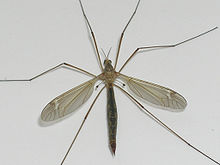 Daddy Longlegs, or Crane
Fly,
in its perfect form of a fly (Tipula
oleracea) does no harm, but the grubs, known by the familiar
name of
'leather-jackets' owing to the toughness
of their skins, are terribly
destructive.
Daddy Longlegs, or Crane
Fly,
in its perfect form of a fly (Tipula
oleracea) does no harm, but the grubs, known by the familiar
name of
'leather-jackets' owing to the toughness
of their skins, are terribly
destructive.
During late summer and autumn the female fly deposits its eggs in large numbers in turf, in garden soil and amongst garden refuse. The eggs are hatched in a fortnight or so and the dark grubs lie in the ground through the winter, inflicting their maximum, amount of injury to young crops in spring and early summer.
Where song birds are scarce the Crane Fly grub is capable of utterly destroying grass and of seriously ravaging the Kitchen Garden; but cultivation, aided by the robins, thrushes, nightingales, and other birds, will keep the insect within bounds, even after a hot summer favorable to its increase.
Where these garden pests are known to exist, the regular use of the hoe is recommended, because when you disturb the soil the grubs are exposed to the sharp eye of the robin and other feathered gardeners.
Common Garden Pests and the Root-Knot Eelworm
Root-Knot Eelworm.—One of the worst pests when growing cucumbers and it manifests itself by the presence of minute warts or nodosities, chiefly on the rootlets. These warts, which are caused by the action of many small thread-like worms named Heterodera radicicola, ranging from the size of a pin's head to that of a pea, and when they are present in large numbers the total failure of the Cucumber crop is the invariable result.
The eelworms are probably introduced to the cucumbers in infected water. Each worm is about one-seventyfifth of an inch in length and is at first coiled up inside a transparent egg. At maturity the eggs crack open, and the worms on emerging bore into the most tender rootlets, and lay their eggs there. These eggs speedily hatch inside the plant and new eelworms are produced, which traverse the rootlets in every direction.
These Heterodera are by no means peculiar to the Cucumber; they attack the roots of Tomatoes and Melons, and the roots, stems, and foliage of many other plants.
Natural Remedy for Root-Knot Eelworm:
Common Garden Pests and the Mealy Bug
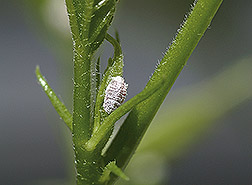 Mealy Bug—This
plague is by no means
confined to plants under glass.
Mealy
Bug may be known by its mealy, floury, or cottony appearance. It has a
great fancy for Grape vines.
Mealy Bug—This
plague is by no means
confined to plants under glass.
Mealy
Bug may be known by its mealy, floury, or cottony appearance. It has a
great fancy for Grape vines.
Natural Remedy for Mealy Bug:
One of the best remedies in getting rid of mealy bug is by washing the plants with a with a brush and soft soap. Our illustration on the left shows a significantly enlarged mealy bug on the stem of a plant.
Common Garden Pests and Red Spider Mites
The scientific name of the Red Spider Mite is Tetranychus telarius.
Our illustration above shows a two spotted spider mite greatly magnified.
Natural Remedy for Red Spider Mite:
Red Spider mites do not like humid and moist conditions.Therefore, the solution to getting rid of these small garden pests is spraying. Spraying promotes a moist atmosphere, and is unfavouable to the Red Spider, which thrives best in heat and dryness.
Melons and Cucumbers may generally be kept clear of Spider by means of spraying only; but when Melons are ripening they must be kept rather dry, and it is very difficult indeed to finish a crop without having the plants attacked by Red Spider.
Common Garden Pests and Scale
Scale—A very common species, found on many kinds plants, is the Lecanium hibernaculorum. Besides this species there is the L. filicum of Ferns, the L. hemisphoericum of Dracanas, the L. rotundum of the Peach, and the common L. hesperidum, or Orange-tree Bug, which is one of the flat species, and it spreads to a great variety of plants.
The Scale insect sucks the sap from plants, and in some instances the ground beneath the foliage is wet and soddened by the falling sap.
Natural Remedy for Scale:
A homemade mustard spray, sprayed on the plants is considered to be a good remedy for Scale. It is, however, advisable (as in other remedies) to test this on a small number of plants at first.
A near relative, a large brown Coccus, infests pomaceous trees, and is especially partial to the Pyracantha, which it often kills outright. The Scale of the Vine is Pulvinaria or Coccus vitis.
Careful washing
with soap and water, and the destruction of each separate Scale as soon
as seen, can be recommended for getting rid of this pest.
Common Garden Pests and Thrips
Thrips may multiply in numbers before being discovered by the novice, for their minute size and their habit make them difficult to see and therefore makes these difficult garden pests to detect. But the black deposit they make shows their existence to the experienced eye, and the sad condition of the plants they have attacked would soon draw your attention if there were no such deposit to tell the tale.
The Indian Azaleas are apt to be attacked by Thrips, as the Grape-vine is by Scale, the Pineapple by Mealy Bug, and the Rose by Green Aphid.
Natural Remedy for Thrips:
Humidity is a powerful preventive, as is also the promotion of vigorous growth by a plentiful supply of water to the roots of the plants; in fact, starvation and a dry, hot air will soon bring an attack of Thrips.
Generally speaking, the best remedy is using tobacco water and a solution of soft soap, together or separately, if carefully applied, speedily make an end of these troublesome garden pests.A special preparation may be made as follows to get rid of these garden pests: Take six pounds of soft soap, and dissolve in twelve gallons of water, add half a gallon of strong tobacco water, and dip the plants in the mixture. Before they become dry, dip again in pure rainwater to remove the mixture. If too large to dip, apply the mixture with a spraygun, and in the course of a quarter of an hour or so spray with pure rainwater.
Common Garden Pests and Caterpillars
Caterpillars cannot often be treated in a wholesale way without injury to the plant. Hence it is usual to rely on hand-picking, and, tedious as this may be, a little perseverance will accomplish wonders.
We have seen a fruit garden, literally hideous with clusters of Caterpillars in spring, completely cleared by a few days' steady work, costing little, and only needing to be conducted so that in removing these common garden pests there should be no harm done to the crops. In the same way the Gooseberry grub should be disposed of.
Precautions cannot be taken against Caterpillars, but the careful cultivator will in good time look for patches of eggs and clusters of young Caterpillars on the under sides of leaves, and will carefully nip off the leaves on which the colonies are feeding, and make an end of them. These garden pests cannot be raked in rank and file, but must be taken in detail, as in guerilla warfare.
Common Garden Pests and Earwigs
 Earwigs
are the dread
of the florist, for
they spoil his best Dahlias
and Hollyhocks, and are also partial to Chrysanthemums.
Earwigs
are the dread
of the florist, for
they spoil his best Dahlias
and Hollyhocks, and are also partial to Chrysanthemums.
They are readily trapped, as they like to go up to a high, dry, dark retreat; hence a bit of dry moss in a small flower-pot, inverted on a stake, will entice them into your hands; and if you are determined to keep down Earwigs, this is the way to go, though, perhaps, not easy, because it must be followed up morning and evening from the beginning of June onwards.
The hollow stems of the Bean make good traps, as indeed do hollow stems of any kind, for Earwigs love to creep into close, dark shelters after their nocturnal meal. Unfortunately, they use their wings freely, and so travel from garden to garden, looking for 'fresh woods and pastures new.'
Common Garden Pests and Slugs
Slugs are serious plagues to the gardener, and they sometimes appear in large numbers so suddenly as to suggest the idea that the little Slugs have come down in showers.
Young crops are especially liable to be damaged by these common pests, and it is not easy, even in well-kept gardens, to keep them down. Constant attention is necessary, particularly in wet seasons. But here, as in the case of many other kinds of pests, means may be adopted that will accomplish the double purpose of destroying the plague and benefiting the land; for lime, salt and soot are certain Slug-killers, and will usually pay dividends by enriching the soil at the same time.
Natural Remedy for Slugs:
A Slug slightly touched by lime or salt has the power of throwing it off by means of the slimy exudation with which the creature is endowed. But if a second application is made to the slug, death will follow.Land made ready for sowing may be pretty well cleared of Slugs by broadcasting it with salt.
Unfortunately, these destroyers are only effective in fine weather. In rainy seasons, or when a crop is rising, it is necessary to resort to trapping, and many kinds of vegetable refuse make tempting baits for slugs.
Pieces of orange peel, suitably placed, are soon covered with slugs, especially in the winter during intervals of frost. Cabbage leaves, sliced turnips and potatoes, or almost any waste vegetable may be used. The traps should be scattered about at dusk, and be gathered up in the morning, and buried in pits, or destroyed by fire.
Common Garden Pests and Snails
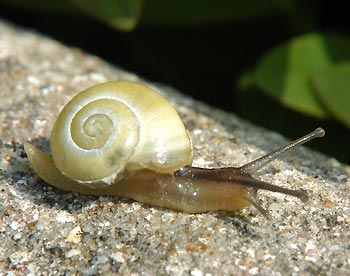 Snails—In
their methods of attacking
garden vegetation, and in the
extent of damage they cause. Snails may be placed in the same category
as Slugs.
Snails—In
their methods of attacking
garden vegetation, and in the
extent of damage they cause. Snails may be placed in the same category
as Slugs.
During the day the Snail usually remains in hiding, emerging from rockeries and creeper-covered walls in the evening or after a shower of rain.
Unfortunately, they can do
a lot of damage.
Natural Remedy for Snails:
One can also protect young plants by giving them heavy dressings of lime or soot. Hand picking is the surest means of dealing with them, and in the winter months large numbers may be collected from among box edgings, the base of ivy-covered walls and similar shelters. Birds, especially thrushes, show a marked partiality for Snails.
Common Garden Pests and Wasps
 Wasps
are a terrible scourge in some
gardens. They spoil a large
quantity of fruit, and jeopardize the remainder by forcing the harvest
before the crops are ready for gathering.
Wasps
are a terrible scourge in some
gardens. They spoil a large
quantity of fruit, and jeopardize the remainder by forcing the harvest
before the crops are ready for gathering.
Natural Remedy for Wasps:
A simple and effective method of destroying these pests is to pour a small quantity of ale mixed with sugar into glass jars and suspend them from branches of Pear or Plum trees. The jars must be emptied every few days and the liquid renewed.
This is a very effective wasp trap and one that definitely reduces their numbers in the orchard.
Common Garden Pests and Wireworms
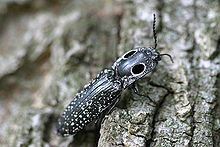 The
Wireworm is the
most persistent and
destructive of all the ground garden pests. There are fully a dozen
species of beetles the larvae of which
are known as 'Wireworms,'
and
of these the 'Spring-Jacks,'
'Click-Beetles,'
and 'Blacksmiths'—Elater
obscurus, E.
lineatus,
and
E. ruficaudis—are the most prevalent.
The
Wireworm is the
most persistent and
destructive of all the ground garden pests. There are fully a dozen
species of beetles the larvae of which
are known as 'Wireworms,'
and
of these the 'Spring-Jacks,'
'Click-Beetles,'
and 'Blacksmiths'—Elater
obscurus, E.
lineatus,
and
E. ruficaudis—are the most prevalent. The female beetle deposits her eggs in the earth in the height of the summer, and in due time the worms emerge and commence their mischief.
These worms have a tenure of three to five years in their subterranean homes, during which time they feed voraciously, and are not very particular as to what they eat. Their muscular power allows them to burrow, and they are well protected by their horny jackets.
When their term of feeding is completed, they descend to a considerable depth and change into the chrysalis state, they emerge as jumping beetles in the course of July and August, a certain proportion remaining in the ground to complete their final change in spring. Their power of destruction is then at an end. They resort to flowers, lead a merry life for a short time, and when they pass away leave plenty of eggs to continue the race of Wireworms.
For practical purposes the Wireworm may be regarded as inhabiting every kind of soil and consuming every kind of crop. The crops it is most partial to are Grass, Potatoes, Turnips, and the juicy stems of all kinds of cereals.
Natural Remedy for Wireworms:
The larvae may be trapped by burying in the ground pieces of Potato, or better still thick slices of Beetroot or 3 inches of old Kale below the ground in spring; the spots to be marked, and the traps examined every few days, when the Wireworms can be destroyed.Soot is a well-known remedy, and by using it the crops also benefit.
Common Garden Pests and Woodlice
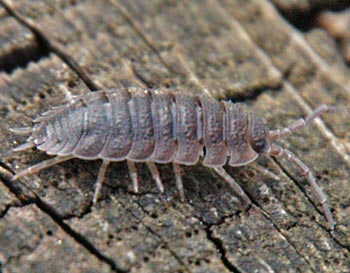 Woodlice
are very destructive but
easily
caught, and they may be
completely eradicated by perseverance.
Woodlice
are very destructive but
easily
caught, and they may be
completely eradicated by perseverance.
Natural Remedy for Woodlice:
When a frame or pit is infested, they can be destroyed wholesale by pouring boiling water down next the brickwork or the woodwork in the middle of the day.
If this doesn't work then you will have to resort to trapping.
In common with Earwigs, they love dryness, darkness, and a snug retreat; but while a mere home suffices for Earwigs, a home with food is demanded by Woodlice.
Take a thumb pot, quite dry and clean. In it place a fresh-cut slice of Potato or Apple, fill up with dry moss, and turn the whole thing over on a bed in a frame or pit. Thus you have devised a Woodlouse trap, and next morning you may knock the pests out of it into a vessel full of hot water, or adopt any other mode of killing that may be convenient. Fifty traps may be prepared no time at all; and those who are determined to get rid of Woodlice may soon make an end of them.
Common Garden Pests in Rats and Mice
Rats and Mice are huge garden pests and can destroy a home vegetable garden very swiftly. We lost almost our whole produce this season to mice and rats who ate the sweetcorn, green tomatoes, beans, cucumbers and almost all our butternuts as a result of their presence.
Natural Remedy for Rats and Mice:
Rat traps are efficient if you know what to bait it with, but sometimes no matter how hard you try, they evade being caught. Using a humane rat trap, may be the answer.
To keep down rats and mice effectively one has to always be one step ahead of mice and rats as they are very smart and soon get to know how to avoid getting caught.
Generally speaking, you need to stop up their homes making sure they can't get out, and for those that are still about the only lasting solution is to know where to put traps and poison for the vermin. A good fox-terrier will keep a large garden free from Rats and Mice.
Forget about German Shepherds! We have two and before we finally erradicated the mice, the dogs would sit and watch the mice eat from their food bowls at night!
Common Garden Pests and Homemade Fruit Fly Traps.
Another way is to take 2 plastic coldrink bottles, and together they make a great trap.
Cut the top off one of the bottles, and then cut out a circle in the second bottle on the side of the bottle in the top third, big enough to receive the screw-top threaded section of the first bottle.
Push it into the circle so that the serated area now becomes a funnel. Pour your mixture through the funnel making sure that the first bottle has remained capped.
Here are some more Insect Images of Garden Pests and Bugs for Identification
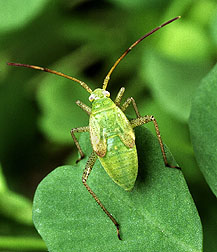 |
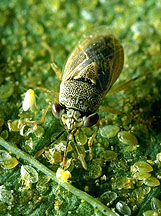 |
| Alfalfa Plant Bug | Big-Eyed Bug |
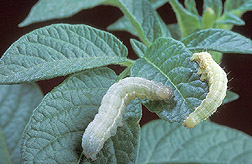 |
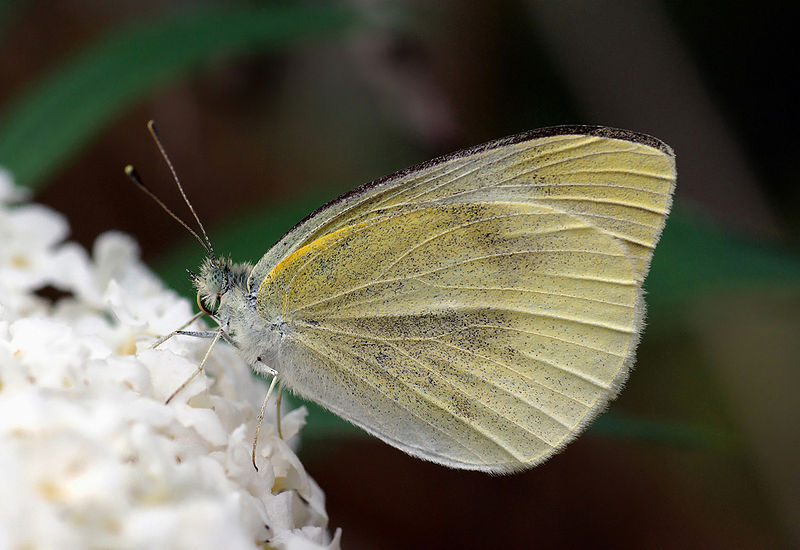 |
| Cabbage Looper Larvae | Cabbage White Butterfly |
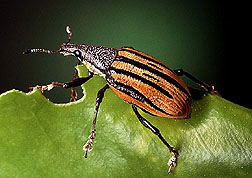 |
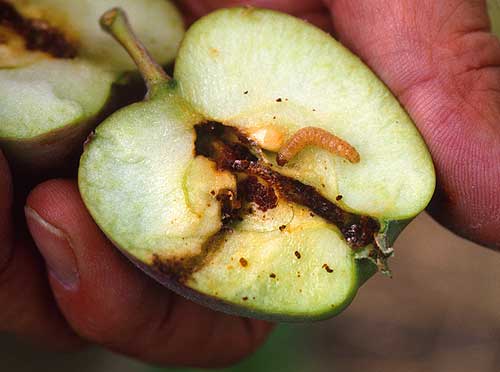 |
| Citrus Root Weevil | Codling Moth Caterpillar |
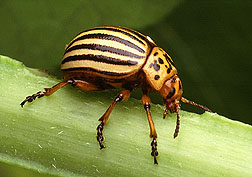 |
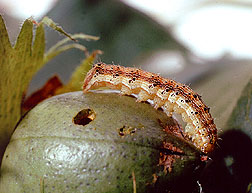 |
| Colorado Potato Beetle | Corn Earworm |
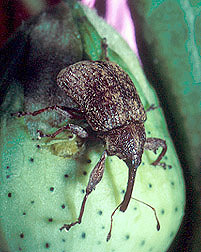 |
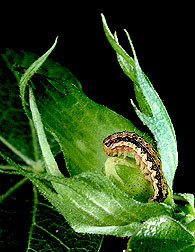 |
| Cotton Boll Weevil | Cotton Boll Worm |
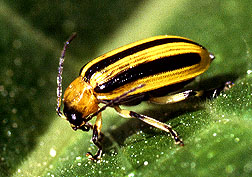 |
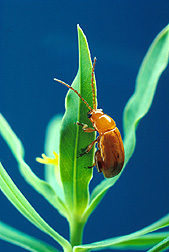 |
| Cucumber Beetle | Flea Beetle |
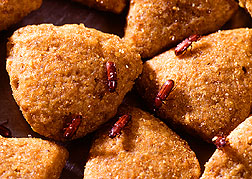 |
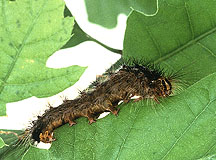 |
| Flour Beetles | Gypsy Moth Caterpillar |
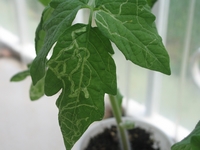 |
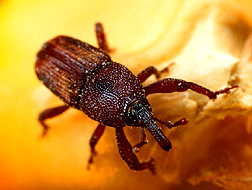 |
| Leaf Miner | Maize Weevil |
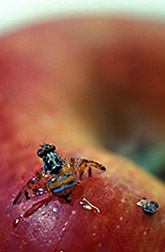 |
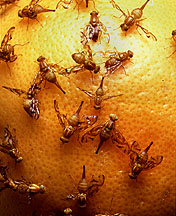 |
| Med Fly | Mexican Fruit Flies |
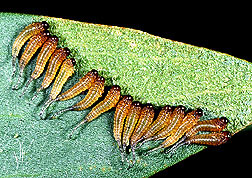 |
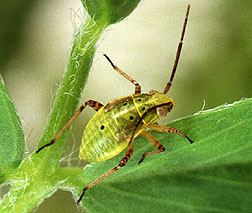 |
| Sawfly Larvae | Tarnished Plant Bug |
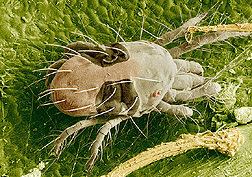 |
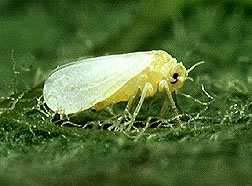 |
| Two Spotted Spider Mite | White Fly |
Did you find this page helpful?
Sharing is a way of saying, "Thanks!"
Follow Us and Keep Up to Date
Other Resources of Interest
Go to Neem for Pest Control
Go to Nasturtiums for Pest Control
Companion Planting for Pest Control
Go to Country Living
Go to Self-Sufficient Living
You can Add your Own Comments and Pages on Garden Pests!
We have lots of pages where you can contribute to throughout this homesteading website. We love hearing from our readers, and hope you will be one of those we hear from too. Feel free to write about your own garden pests here on this page.You can do this by using the form below.
Leave a Comment
Do you have anything that you would like to add after reading this page? We would love to hear your thoughts. If you can add additional information to what has been written here you will be adding value to the website! No need to have any special skills - just type and submit. We will do the rest!
Other Comments
Click below to see comments from other visitors to this page...
Organic Control of Chafer Beetles 




I don't know what these creatures are. They fly and have eaten the lilac blooms and now are eating the leaves, my ferns, marigolds and my hydrangeas. I …
A cup of beer works on slugs and snails 




Countersink a cup in your garden soil so that the rim is just above flush. Fill it with beer at least half way, but not to the rim. Slugs will be attracted …
Tip for Getting Rid of Snails and Slugs 




This tip is for those of us who wish to take revenge on those slimy creatures, slugs and snails and engage in direct battle with them.
Fill a spray …
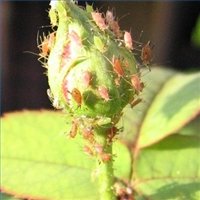





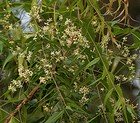



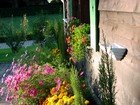

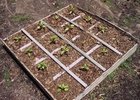
New! Comments
Do you have something of value to add? Leave me a comment in the box below.